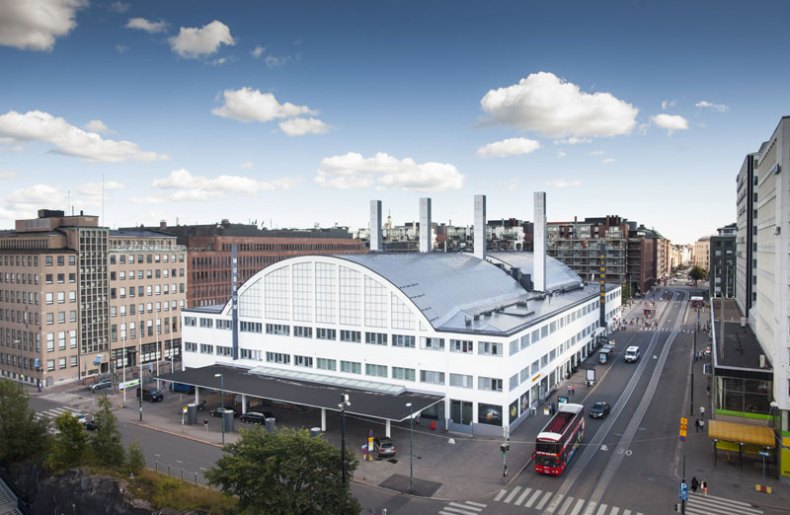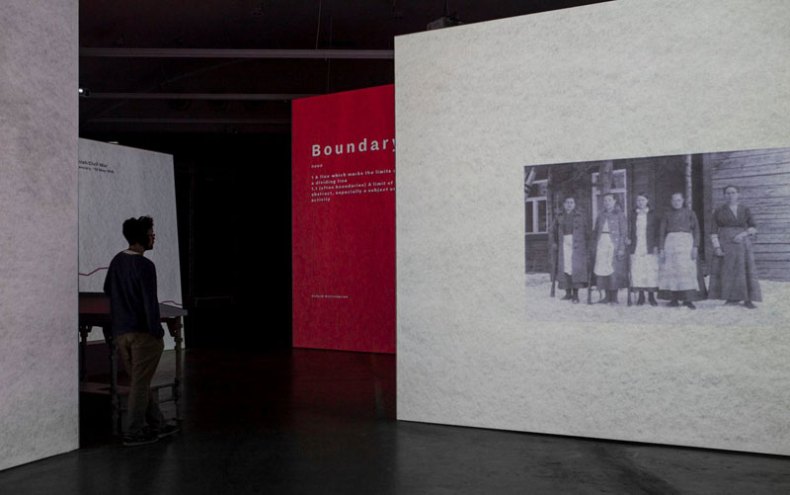When I arrived in Helsinki two years ago, the subject on everybody’s minds was the possible arrival of Guggenheim Helsinki. Now it seems that the whole scheme has finally been put to bed following the announcement by Sampo Terho that the Finns party have blocked any government funding for the €120–140m project. With no state funding, at least from the current government, the City of Helsinki alone cannot shoulder the burden. Guggenheim itself is contributing virtually nothing so it can only be good news that this unwanted imposition looks set to go the way of the foundation’s other aborted or failed attempts in Las Vegas, Berlin, Vilnius and Guadalajara.
As I’ve argued already, the Guggenheim’s extractive funding model is ill-suited to a city like Helsinki, and Terho’s decision is the correct one (although it may well be a case of what T.S. Eliot called ‘the greatest treason / To do the right deed for the wrong reason’). With Kiasma, HAM, and Helsinki City Museum all recently reopening, and Amos Rex on the way, the last thing Helsinki needs is yet another major museum.

The Helsinki Art Museum reopened in September 2015. © HAM / Maija Toivanen
What has emerged from the whole tiresome saga is that, despite all the talk of austerity, there is actually funding available for the arts – especially if they can be seen to contribute to the local economy. Checkpoint Helsinki made good use of this realisation, although it was disappointing for many to see the City of Helsinki halt the organisation’s funding after three years. Prior to Terho’s announcement, Finnair and other travel companies pledged €1 million to Guggenheim Helsinki – paltry for such a costly project but money that could go a long way if used properly. For example, in 2015 Frame Finland, the body responsible for promoting Finnish contemporary art, funded 172 projects with grants amounting to just €260,000. The Finnair pledge should now be honoured and the money spent on promoting Helsinki’s existing cultural scene – at home and abroad. What is needed is not more bricks and mortar but visibility.
That is why it was great to see the launch in May of HKI Art Guide, the result of a collaboration between Romanian-born marketing specialist Alexandra Marila and Brazilian-born theatre producer Diego Barros. The aim is to help their readers find out about the brilliant art in Helsinki that the general public so often miss out on. The guide currently consists of a newsletter and website with features, reviews and interviews to supplement exhibition and event listings. The pair also offers creative and communications services for artists and galleries. There is potential to grow in many other directions too: lectures, guided tours, studio visits, maybe even a printed magazine (Helsinki could certainly do with more English-language arts coverage). The possibilities for both art and business would be boosted hugely were Finnair et al to channel some of their €1 million in this direction.

The Museum of Nonhumanity is the latest iteration of ‘The History of Others’, an ongoing project by artist Terike Haapoja and writer Laura Gustafsson. Photo: Terike Haapoja
Both government and business need to realise how much the art scene here is worth celebrating, and sooner rather than later. In two years here I’ve come across some truly brilliant artists: the likes of Terike Haapoja, Shoji Kato, Mari Keski-Korsu, Jussi Kivi, Antti Laitinen, and Maria Pääkkönen. Several of these are well known internationally, many less so. The History of Others, Haapoja’s ongoing project with writer Laura Gustafsson, is a case in point. September saw the project’s latest iteration, The Museum of Nonhumanity, take over an old industrial site in Suvilahti, in north-east Helsinki. Across two rooms of video and audio and a lot of text, Haapoja and Gustafsson condensed years of research into 70 minutes of powerful, provocative, yet intellectually nuanced mediations on the human history of exploitation, colonialism, subjugation and oppression – both of other species and of each other.
Unusually, this is a work that credits its audience with a certain level of intelligence as it delves into a range of difficult subjects: from slavery and abortion to the Rwandan genocide, the colonisation of the Congo, and the treatment of women during the Finnish civil war. Disgust, silence, desire, stupidity: all have played their part in the history of Western civilisation. As Derrida argued in The Beast and the Sovereign, maybe the one trait that is ‘proper to man’ is the ability to act with the stupid cruelty of the beast. I could write reams on The Museum of Nonhumanity. For now, it’s enough to say that this is the kind of project that ought to be shown widely across the world. There has been some talk of a tour. Keep your fingers crossed.
This is the last of our Baltic Diary series. View the rest here.

Helsinki’s artists are world class – but recognition has to start at home
The Museum of Nonhumanity, Helsinki. Photo: Terike Haapoja
Share
When I arrived in Helsinki two years ago, the subject on everybody’s minds was the possible arrival of Guggenheim Helsinki. Now it seems that the whole scheme has finally been put to bed following the announcement by Sampo Terho that the Finns party have blocked any government funding for the €120–140m project. With no state funding, at least from the current government, the City of Helsinki alone cannot shoulder the burden. Guggenheim itself is contributing virtually nothing so it can only be good news that this unwanted imposition looks set to go the way of the foundation’s other aborted or failed attempts in Las Vegas, Berlin, Vilnius and Guadalajara.
As I’ve argued already, the Guggenheim’s extractive funding model is ill-suited to a city like Helsinki, and Terho’s decision is the correct one (although it may well be a case of what T.S. Eliot called ‘the greatest treason / To do the right deed for the wrong reason’). With Kiasma, HAM, and Helsinki City Museum all recently reopening, and Amos Rex on the way, the last thing Helsinki needs is yet another major museum.
The Helsinki Art Museum reopened in September 2015. © HAM / Maija Toivanen
What has emerged from the whole tiresome saga is that, despite all the talk of austerity, there is actually funding available for the arts – especially if they can be seen to contribute to the local economy. Checkpoint Helsinki made good use of this realisation, although it was disappointing for many to see the City of Helsinki halt the organisation’s funding after three years. Prior to Terho’s announcement, Finnair and other travel companies pledged €1 million to Guggenheim Helsinki – paltry for such a costly project but money that could go a long way if used properly. For example, in 2015 Frame Finland, the body responsible for promoting Finnish contemporary art, funded 172 projects with grants amounting to just €260,000. The Finnair pledge should now be honoured and the money spent on promoting Helsinki’s existing cultural scene – at home and abroad. What is needed is not more bricks and mortar but visibility.
That is why it was great to see the launch in May of HKI Art Guide, the result of a collaboration between Romanian-born marketing specialist Alexandra Marila and Brazilian-born theatre producer Diego Barros. The aim is to help their readers find out about the brilliant art in Helsinki that the general public so often miss out on. The guide currently consists of a newsletter and website with features, reviews and interviews to supplement exhibition and event listings. The pair also offers creative and communications services for artists and galleries. There is potential to grow in many other directions too: lectures, guided tours, studio visits, maybe even a printed magazine (Helsinki could certainly do with more English-language arts coverage). The possibilities for both art and business would be boosted hugely were Finnair et al to channel some of their €1 million in this direction.
The Museum of Nonhumanity is the latest iteration of ‘The History of Others’, an ongoing project by artist Terike Haapoja and writer Laura Gustafsson. Photo: Terike Haapoja
Both government and business need to realise how much the art scene here is worth celebrating, and sooner rather than later. In two years here I’ve come across some truly brilliant artists: the likes of Terike Haapoja, Shoji Kato, Mari Keski-Korsu, Jussi Kivi, Antti Laitinen, and Maria Pääkkönen. Several of these are well known internationally, many less so. The History of Others, Haapoja’s ongoing project with writer Laura Gustafsson, is a case in point. September saw the project’s latest iteration, The Museum of Nonhumanity, take over an old industrial site in Suvilahti, in north-east Helsinki. Across two rooms of video and audio and a lot of text, Haapoja and Gustafsson condensed years of research into 70 minutes of powerful, provocative, yet intellectually nuanced mediations on the human history of exploitation, colonialism, subjugation and oppression – both of other species and of each other.
Unusually, this is a work that credits its audience with a certain level of intelligence as it delves into a range of difficult subjects: from slavery and abortion to the Rwandan genocide, the colonisation of the Congo, and the treatment of women during the Finnish civil war. Disgust, silence, desire, stupidity: all have played their part in the history of Western civilisation. As Derrida argued in The Beast and the Sovereign, maybe the one trait that is ‘proper to man’ is the ability to act with the stupid cruelty of the beast. I could write reams on The Museum of Nonhumanity. For now, it’s enough to say that this is the kind of project that ought to be shown widely across the world. There has been some talk of a tour. Keep your fingers crossed.
This is the last of our Baltic Diary series. View the rest here.
Unlimited access from just $16 every 3 months
Subscribe to get unlimited and exclusive access to the top art stories, interviews and exhibition reviews.
Share
Recommended for you
Guggenheim Helsinki should not see the light of day
Moreau Kusunoki’s designs look nice, but the public shouldn’t have to pay
One of Finland’s most distinguished artists is back from the wilderness
Jussi Kivi represented the country at the Venice Biennale in 2009, before retreating from the limelight. Now he’s back with a book from Helsinki’s edgelands
Should public art be in the public domain? Sweden doesn’t think so
A recent court case involving Wikimedia in Sweden has taken the art world by surprise